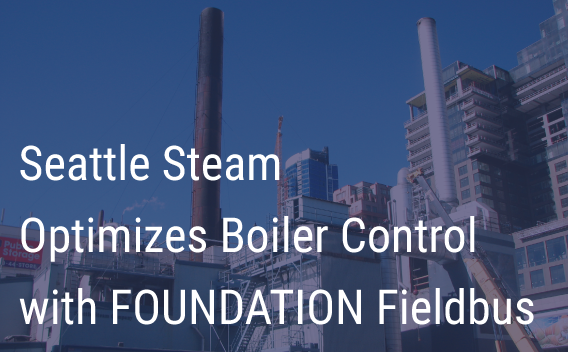Our Document Library and Resouce sections extend the specification repertoires to other types of materials for developers and end-users such as Technical Papers, Application Guides, User Stories, Books and more.
FieldComm Group Application Guides are focused on assisting developers understand key concepts of Ethernet-APL, PA-DIM, HART, FDI and FOUNDATION Fieldbus technologies.
In order to take advantage of the digital capabilities of HART transmitters, especially for reporting process data values, it is essential that they be calibrated correctly. This guide outlines the differences between calibrating a conventional and a HART transmitter, and gives recommendations for calibration practices.
In the process automation industry, commissioning tends to be a systematic, comprehensive and well‐planned process. It ensures that all instruments, controllers and asset management systems in an industrial plant are configured as per the operational requirements for a specific application. Ideally, instruments and systems are configured prior to installation ‐‐ or offline.
To provide a positive user experience, developers must create a DD that implements upload/download functionality. The purpose of this document is to provide guidance and best practices for developing these functions.
The FOUNDATION Fieldbus System Engineering Guideline is intended to complement the principal’s instrument specifications. It details how fieldbus devices are specified, installed, configured, commissioned, which are different than conventional analog or "smart" instruments. This Engineering Guideline addresses the implementation of FOUNDATION fieldbus only.
View in FieldComm Group Library
The HART Application Guide has been created by the HART Communication Foundation to provide users of HART products with the information necessary to obtain the full benefits of HART digital instrumentation.
View in FieldComm Group Library (English)
View in FieldComm Group Library (Chinese)
This technical paper provides a step‐by‐step guide for the development and registration process of a WirelessHART (IEC 62591) compliant field device. It also identifies the main decisions that must be made during the development process and helps the developer navigate these decisions. Once the development and registration process are well understood, the developer can effectively plan the development project to reduce time‐to‐market and minimize the costs involved.
View in FieldComm Group Library
The intent of the FSK Physical Layer Test Specification is to define conformance tests for HART devices so as to promote Physical Layer interoperability between devices. This document outlines all recommended tests, procedures and equipment necessary to determine conformance of all devices designed to the HART FSK Physical Layer Specification.
FieldComm Group brochures available in PDF format.
This brochure will explain why and how FDI can be implemented. All the tools and training you need to get started exist today and can be delivered through FieldComm Group. I encourage you to get started on the path of evolving your plant in this digital revolution by implementing FDI technology as your future-proof integration standard!
Learn about how FDI works and what the benefits are, compared to past integration technologies.
Create FDI solutions. Use technical specifications, development tools, and common software components to increase efficiency, save costs, and to ensure interoperability.
Register your FDI products with FieldComm Group to indicate conformance to the international FDI standards and proven interoperability with other FDI solutions.
View in FieldComm Group Library
Many of today’s field devices function more like embedded computers than transmitters of physical process values. They are intelligent, microprocessor-based devices that offer a wealth of data not previously available. They are connected via sophisticated communication networks to complex control systems and beyond. And they generate much more data about both the process being managed and their own status than ever before. But taking advantage of this data is a challenge.
This brochure outlines the basics of HART technology and highlights its benefits.
View in FieldComm Group Library
A quick guide for end users to understand FDI and where it is used, this brochure presents our microsite ask4FDI.com with links to helpful videos.
View in FieldComm Group Library
FOUNDATION™ Fieldbus has been driving the digital transformation to smarter plant operations, made popular by terms such as the Industrial Internet of Things (IIoT) and Industry 4.0, for more than two decades. FOUNDATION Fieldbus technology is embedded in millions of intelligent devices and systems and has enabled end users to make better and faster decisions, increase productivity, reduce costs, and minimize risk while raising the level of awareness of plant operations from instrument technicians all the way to corporate officers.
FOUNDATION Fieldbus allows industrial organizations to unlock the full capabilities of their existing assets. By providing the means to leverage immense amounts of data generated by modern automation systems, the potential uses and benefits are numerous. They range from enhanced data collection and improved remote monitoring, diagnostics, and asset management, to reduced configuration and commissioning effort
FDI (Field Device Integration) is a new device integration technology for process automation designed to integrate field devices into automation networks with the help of standardized, vendor-independent tools and procedures. This article covers the core of FDI technology and how it simplifies system and device installation, configuration, operations, and maintenance to avoid tedious integration effort — therefore saving time and money.
FDI is an evolutionary device integration technology designed to work with multiple field communication protocols. HART, WirelessHART, FOUNDATION Fieldbus, PROFIBUS, PROFINET, and ISA100 can be natively supported. Other common automation protocols, like Modbus/TCP, EtherNet/IP, Proprietary or any other protocols can be supported through an FDI Communication Server – an OPC-UA server used by an FDI server to access non-native networks.
This article focuses on FDI Communication Server in detail and the benefits it brings in managing the device and reducing the challenges to support the heterogeneous network topology in the process automation industry.
In the era of digital transformation, with the growing convenience and use of the Internet, modern manufacturing systems must contend with new security risks. Safeguarding critical manufacturing assets require a holistic approach that deploys multiple layers of defense to address distinct types of threats.
This article covers the cyber security challenges faced by the process automation industry, security measures taken in FDI technology and the benefits that FDI brings in by mitigating such security threats for the end users.
The audience of this article includes instrument suppliers, system suppliers, cyber security professionals, automation engineers, business and technical leaders in the process industry.
FDI (Field Device Integration) is a new device integration technology for process automation designed to integrate field devices into automation networks with the help of standardized, vendor-independent tools and procedures. One challenge that continually confronts end users is software revision management for intelligent field devices.
This article covers the challenges in device revision management and how the FDI technology addresses these challenges by providing access to a single authoritative source for registered FDI Device Packages – the FDI Package Repository.
The audience of this article includes plant operators, maintenance engineers, end users, instrument suppliers, system suppliers, business, and technical leaders in the process industry.
“Standardized, intelligent system interfaces are the key success factors to achieve the benefits of IIoT and Industrie 4.0 in the process industry. They are the foundation for enabling our core processes, supply chain information and plant data to integrate more easily eliminating the need for expensive, proprietary and often custom solutions. FDI (Field Device Integration) is a big step forward to integrate field devices into automation networks with standardized, vendorindependent tools and procedures” – NAMUR.
This article focuses on the key role of FDI in digital transformation by deriving valuable information from field devices to deliver the business value by putting plant performance information in the hands of those who need it.
The audience of this article includes plant owners, instrument suppliers, system suppliers, automation engineers, business and technical leaders in the process industry.
In the process automation industry, commissioning tends to be a systematic, comprehensive and well-planned process. It ensures that all instruments, controllers and asset management systems in an industrial plant are configured as per the operational requirements for a specific application. Ideally, instruments and systems are configured prior to installation -- or offline.
This article covers the existing challenges in offline configuration and benefits that FDI brings by standardizing the offline configuration procedure driving; consistency across all systems, increasing first-pass success rate, shortening the commissioning schedule, and reducing engineering hours.
The audience of this article includes commissioning engineers, plant owners, operators, maintenance engineers, host system suppliers, device suppliers, business and technical leaders in the process industry.
Learn about the key advantages of software-based distributed I/O connectivity with virtual marshalling.
View in FieldComm Group Library
WirelessHART technology is a complementary enhancement to the HART Protocol, providing an additional capability that benefits both existing and new monitoring and control applications. A WirelessHART device can be installed anywhere in the plant without wires, significantly reducing the cost of cabling, installation and commissioning. Find out how you can expand your possibilities using WirelessHART.
View in FieldComm Group Library
The first WirelessHART devices were deployed in 2009 and since then over 40,000 networks have been installed. Today, WirelessHART instruments represent more than 4% of all HART unit sales - hundreds of thousands of WirelessHART devices per year. In fact, WirelessHART has the single largest market share (>30%) of all process wireless communications. WirelessHART is providing significant benefits to the industry and improving the reliability and competitiveness of plants. This guide provides many application stories to fi re your imagination and encourage you to improve your business.
View in FieldComm Group Library
Technical Papers available to download are described below.
In the industrial and manufacturing sector, it’s important to make the most of the information provided by intelligent measurement devices. The usefulness of this information depends on access to and use of real-time, reliable data, allowing smart choices to be made. Integrating the data so that effective action gets taken depends on a network infrastructure that breaks down traditional “silos of information.”
Current developments such as the Industrial Internet of Things (IIoT) and Industry 4.0 are focused on digital transformation of the field device network. This will help industrial organizations transition from reactive to predictive maintenance and optimize asset management strategies to improve operations and reduce costs. The goal is to use digitally available information from existing, installed field instruments to improve safety, operations, and reliability. Plant floor to executive office real-time access is key to delivering value to the enterprise.
FieldComm Group technologies provide the means to connect and integrate digital information – and have for over 20 years. FOUNDATION™ Fieldbus, HART® and WirelessHART® devices can be the basis for digitization supporting IIoT initiatives. At the same time, the Field Device Integration (FDI™) standard greatly simplifies device integration and takes account of the various tasks over the entire lifecycle for both simple and the most complex devices, including configuration, commissioning, diagnosis and calibration.
View in FieldComm Group Library
Co-developed by major industry leaders and manufacturers, FDI brings new IIoT/Industrie4.0 technology to the management of smart devices in the Process Automation industry. It is the next generation, unifying device integration technology. The primary objective of FDI is to dramatically simplify software installation, configuration, maintenance, and management of field instruments and host systems.
Today’s field devices rely on device information files such as an EDD or a DTM™ to provide access to the features and functions of the device. FDI brings standardization to the packaging and distribution of all the software and tools necessary to integrate a device with a host system.
In order to enhance the current investment in FDT based solutions, use FDI Device Packages.
View in FieldComm Group Library
Ethernet-APL is an enhanced physical layer for single-pair Ethernet (SPE) based on 10BASET1L. It will enable long cable lengths and explosion protection via intrinsic safety with communication and power over two wires.
Based on IEEE and IEC standards, Ethernet-APL supports any Ethernet-based automation protocol and will develop into a single, long-term stable technology for the entire process automation community.
本紙では、Ethernet-APL (耐久性が高められた高信頼性の物理層で、プロセスプラント分野の要件に適合する属性を備えている)の規格化と開発について説明しています。Ethernet-APL は、エンタープライズレベルのネットワークからフィールド機器レベルの通信までイーサネットベース通信の論理的拡張を可能にします。イーサネット接続のこの最後の一歩により、たとえば役員会議室から幅広いネットワーク領域のデータを取得することができるようになります。
View in FieldComm Group Library
Through device integration, functions and information from devices can be made accessible at a higher level (in a central location). Both, simple and complex devices need integration!
Efficient and economically viable device integration requires multiprotocol, standardized technology so that device information can be made available across different manufacturers. In the past, the development of such uniform technology was inhibited by too many different interests from organizations and automation manufacturers, meaning different technical solutions were created. The current solutions – EDDL (Electronic Device Description Language) in various formats and FDT (Field Device Technology) – have their strengths and weaknesses, but also overlap to a large extent and thus lead to additional expense for users, manufacturers and in standardization. With FDI, technology has been developed that combines the advantages of FDT with those of EDDL in a single, scalable solution. FDI takes account of the various tasks over the entire lifecycle for both simple and the most complex devices, including configuration, commissioning, diagnosis, and calibration.
Globally leading control system and device manufacturers, such as ABB, Emerson, Endress+Hauser, Honeywell, Invensys, Siemens, and Yokogawa, along with the major associations FDT Group, Fieldbus Foundation, HART Communication Foundation, OPC Foundation, PROFIBUS & PROFINET International, are supporting and driving forward the development of the FDI Technology together.
View in FieldComm Group Library
This technical paper (20 pages) provides a high-level introduction to the mandatory security requirements provided by HART-IP servers/devices.
This paper provides a discussion of security features and use cases for deploying intrinsically safe WirelessHART networks. It will benefit everyone who uses or designs enterprise security as well as those who maintain WirelessHART networks or interested in learning more about WirelessHART security features.
View in FieldComm Group Library
Today’s process automation field devices communicate with host systems over either analog 4-20mA connections, sometimes with embedded digital HART data; or via 2-wire digital fieldbus connections conforming generally to the FOUNDATION Fieldbus (FF) or PROFIBUS PA standards as well as wireless protocols like Wireless HART or ISA 100.
Initiatives all over the world such as Industrie 4.0 (I 4.0), Industrial Internet of Things (IIoT), Open Process Automation Forum (OPAF) and the NAMUR Open Architecture (NOA) are working on concepts for digital transformation.
The enormous installed base in the process industries requires a digital transformation solution that can make use of information from devices communicating via current field communication solutions. Each of these existing communication protocols employs different software structures, or information model, to represent the same information.
To ensure interoperability and seamless access to device information it is necessary to standardize on the form and basic contents of the information models for certain device classes independent of a specific communication protocol. Thus enabling seamless instrumentation information flow throughout the enterprise.
FieldComm Group (FCG), OPC Foundation (OPCF), and PROFIBUS/PROFINET International (PI) have taken the initiative to jointly standardize and specify the information model for Process Automation Devices - PA-DIM. The work is being performed in the working group structure of FCG with dedicated representatives from OPCF and PI.
This document has been created to support the developing needs of WirelessHART® end users adopting self-organizing mesh networks within the process industry. It is intended to show how WirelessHART devices can be included in capital projects of any size.
User Stories and Case Studies
Browse our collection of use case studies and user success stories from around the world.




